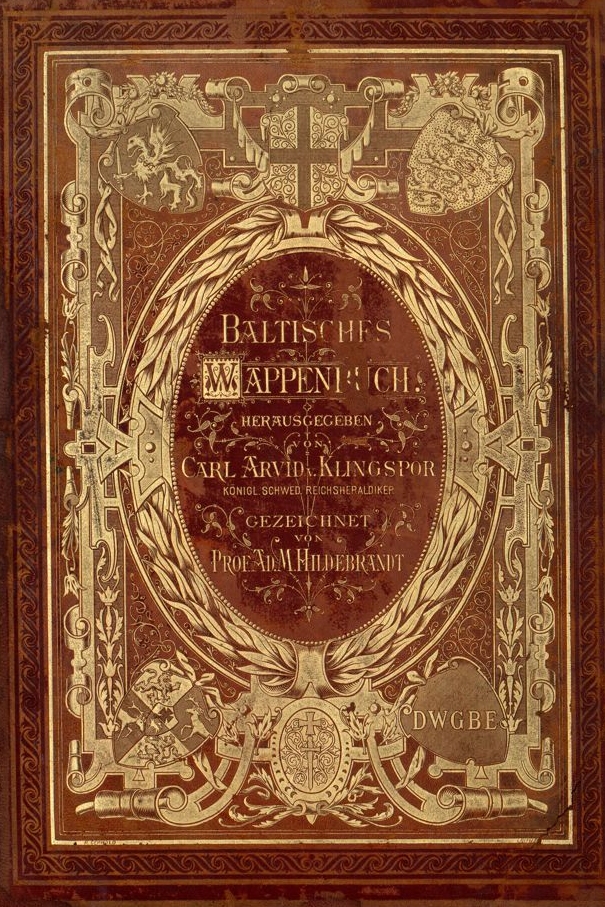|
Duke William Frederick Philip Of Württemberg
Duke William Frederick Philip of Württemberg (27 December 1761, in Stettin – 10 August 1830, in Schloss von Stetten im Remstal) was a prince of the House of Württemberg and a minister for war. Early life William was the fourth son of Frederick II Eugene, Duke of Württemberg and Margravine Sophia Dorothea of Brandenburg-Schwedt, Sophia Dorothea of Brandenburg-Schwedt, eldest daughter of Frederick William, Margrave of Brandenburg-Schwedt and Princess Sophia Dorothea of Prussia, a niece of Frederick II of Prussia. Military career In 1779 he joined the Royal Danish Army and quickly rose to the rank of Oberst. In 1781 he commanded his own regiment, being promoted to major general in 1783, moved to the Royal Life Guards (Denmark), Danish Foot Guards in 1785 and promoted to lieutenant general in 1795. In 1801 he became governor of Copenhagen and later the same year faced the Battle of Copenhagen (1801), Battle of Copenhagen in that role. In 1806 he paid 10,000 Thaler, Reichstaler ... [...More Info...] [...Related Items...] OR: [Wikipedia] [Google] [Baidu] |
Stettin
Szczecin ( , , ; ; ; or ) is the capital and largest city of the West Pomeranian Voivodeship in northwestern Poland. Located near the Baltic Sea and the German border, it is a major seaport, the largest city of northwestern Poland, and seventh-largest city of Poland. the population was 391,566. Szczecin is located on the Oder River, south of the Szczecin Lagoon and the Bay of Pomerania. The city is situated along the southwestern shore of Dąbie Lake, on both sides of the Oder and on several large islands between the western and eastern branches of the river. It is also surrounded by dense forests, shrubland and heaths, chiefly the Wkrzańska Heath shared with Germany (Ueckermünde) and the Szczecin Landscape Park. Szczecin is adjacent to the town of Police and is the urban centre of the Szczecin agglomeration, an extended metropolitan area that includes communities in the German states of Brandenburg and Mecklenburg-Western Pomerania. The city's recorded histo ... [...More Info...] [...Related Items...] OR: [Wikipedia] [Google] [Baidu] |
Stuttgart
Stuttgart (; ; Swabian German, Swabian: ; Alemannic German, Alemannic: ; Italian language, Italian: ; ) is the capital city, capital and List of cities in Baden-Württemberg by population, largest city of the States of Germany, German state of Baden-Württemberg. It is located on the Neckar river in a fertile valley known as the ''Stuttgarter Kessel'' (Stuttgart Cauldron) and lies an hour from the Swabian Jura and the Black Forest. Stuttgart has a population of 632,865 as of 2022, making it the list of cities in Germany by population, sixth largest city in Germany, while over 2.8 million people live in the city's administrative region and nearly 5.5 million people in Stuttgart Metropolitan Region, its metropolitan area, making it the metropolitan regions in Germany, fourth largest metropolitan area in Germany. The city and metropolitan area are consistently ranked among the List of EU metropolitan regions by GDP#2021 ranking of top four German metropolitan regions, top 5 Europea ... [...More Info...] [...Related Items...] OR: [Wikipedia] [Google] [Baidu] |
Baltic German Nobility
The Baltic German nobility was a privileged social class in the territories of modern-day Estonia and Latvia. It existed continuously from the Northern Crusades and the medieval foundation of Terra Mariana. Most of the nobility consisted of Baltic Germans, but with the changing political landscape over the centuries, Polish, Swedish, Russian, Danish, and even Scottish families also became part of the nobility, just as Baltic German families re-settled in locations such as the Swedish and Russian Empires. The nobility of Lithuania is for historical, social and ethnic reasons separated from the German-dominated nobility of Estonia and Latvia. History This nobility was a source of officers and other servants to Swedish kings in the 16th and particularly 17th centuries, when Couronian, Estonian, Livonian and the Oeselian lands belonged to them. Subsequently, the Russian tsars used Baltic nobles in all parts of local and national government. Latvia in particular was noted for i ... [...More Info...] [...Related Items...] OR: [Wikipedia] [Google] [Baidu] |
Sweden
Sweden, formally the Kingdom of Sweden, is a Nordic countries, Nordic country located on the Scandinavian Peninsula in Northern Europe. It borders Norway to the west and north, and Finland to the east. At , Sweden is the largest Nordic country by both area and population, and is the List of European countries by area, fifth-largest country in Europe. Its capital and largest city is Stockholm. Sweden has a population of 10.6 million, and a low population density of ; 88% of Swedes reside in urban areas. They are mostly in the central and southern half of the country. Sweden's urban areas together cover 1.5% of its land area. Sweden has a diverse Climate of Sweden, climate owing to the length of the country, which ranges from 55th parallel north, 55°N to 69th parallel north, 69°N. Sweden has been inhabited since Prehistoric Sweden, prehistoric times around 12,000 BC. The inhabitants emerged as the Geats () and Swedes (tribe), Swedes (), who formed part of the sea-faring peopl ... [...More Info...] [...Related Items...] OR: [Wikipedia] [Google] [Baidu] |
Freiherr
(; male, abbreviated as ), (; his wife, abbreviated as , ) and (, his unmarried daughters and maiden aunts) are designations used as titles of nobility in the German-speaking areas of the Holy Roman Empire, the Austro-Hungarian Empire and in its various successor states, including Austria, Prussia, Bavaria, Liechtenstein, Luxembourg, etc. Traditionally, it denotes the titled rank within the nobility above ' (knight) and ' (nobility without a specific title) and below ' ( count or earl). The title superseded the earlier medieval form, '. It corresponds approximately to the English baron in rank. The Duden orthography of the German language references the French nobility title of ''Baron'', deriving from the Latin-Germanic combination ''liber baro'' (which also means "free lord"), as corresponding to the German "Freiherr"; and that ''Baron'' is a corresponding salutation for a ''Freiherr''. Duden; Definition of ''Baron, der'' (in German)/ref> ' in the feudal system The title ... [...More Info...] [...Related Items...] OR: [Wikipedia] [Google] [Baidu] |
Lady In Waiting
A lady-in-waiting (alternatively written lady in waiting) or court lady is a female personal assistant at a court, attending on a royal woman or a high-ranking noblewoman. Historically, in Europe, a lady-in-waiting was often a noblewoman but of lower rank than the woman to whom she attended. Although she may either have received a retainer or may not have received compensation for the service she rendered, a lady-in-waiting was considered more of a secretary, courtier, or companion to her mistress than a servant. In some other parts of the world, the lady-in-waiting, often referred to as ''palace woman'', was in practice a servant or a slave rather than a high-ranking woman, but still had about the same tasks, functioning as companion and secretary to her mistress. In courts where polygamy was practiced, a court lady might have been formally available to the monarch for sexual services, and she could become his wife, consort, courtesan, or concubine. ''Lady-in-waiting'' ... [...More Info...] [...Related Items...] OR: [Wikipedia] [Google] [Baidu] |
Coswig, Anhalt
Coswig () is a town in the district of Wittenberg of Saxony-Anhalt, Germany. It is situated on the right bank of the Elbe, approx. 12 km west of Wittenberg, and 15 km east of Dessau. History The Castle of Coswig was mentioned first in 1187. There is no evidence for slav settlements before this date. In 1215 Coswig is called an "Oppidium". During this time it was one of the most important cities North of the river Elbe. In the 16th century Coswig was already connected to a drinking water pipe from Wörpen. Weaving, pottery and farming played the most important role in economics. The city was nearly completely destroyed by Hispanic troops during the Schmalkaldic War. From 1603 to 1793, Coswig belonged to Anhalt-Zerbst. The Castle was constructed at the end of the 17th century. The railway station was inaugurated on 10 September 1841. In 1987 the city celebrated its 800th-year of existence. Geography The town Coswig consists of Coswig proper and the following ''Orts ... [...More Info...] [...Related Items...] OR: [Wikipedia] [Google] [Baidu] |
Wilhelmine Von Tunderfeldt-Rhodis
The Wilhelmine period or Wilhelmian era () comprises the period of German history between 1888 and 1918, embracing the reign of Kaiser Wilhelm II in the German Empire from the death of Kaiser Friedrich III until the end of World War I and Wilhelm's abdication during the November Revolution. It represented an era of creative ferment in the society, politics, culture, art, literature, and architecture of Germany. It also roughly coincided with the late Victorian and Edwardian eras in the British Empire, the Gilded Age in the United States, the Belle Époque in the Third French Republic, and the Silver Age in the Russian Empire. Overview The term "Wilhelminism" () is not meant as a conception of society associated with the name Wilhelm and traceable to an intellectual initiative of the German Emperor. Rather, it relates to the image presented by Wilhelm II and his demeanour, as manifested by the public presentation of grandiose military parades and self-aggrandisement on his part ... [...More Info...] [...Related Items...] OR: [Wikipedia] [Google] [Baidu] |
University Of Tübingen
The University of Tübingen, officially the Eberhard Karl University of Tübingen (; ), is a public research university located in the city of Tübingen, Baden-Württemberg, Germany. The University of Tübingen is one of eleven German Excellence Universities. The University of Tübingen is especially known as a centre for the study of plant biology, medicine, law, archeology, ancient cultures, philosophy, theology, religious studies, humanities, and more recently as a center of excellence for artificial intelligence. The university's noted alumni and faculty include presidents, a pope, EU Commissioners, judges of the Federal Constitutional Court, and Johannes Kepler. The university is associated with eleven List of Nobel laureates, Nobel laureates, especially in the fields of medicine and chemistry. History The University of Tübingen was founded in 1477 by Count Eberhard I, Duke of Württemberg, Eberhard V (Eberhard im Bart, 1445–1496), later the first Duke of Württemberg ... [...More Info...] [...Related Items...] OR: [Wikipedia] [Google] [Baidu] |
Friedrich Von Phull
Friedrich may refer to: Names *Friedrich (given name), people with the given name ''Friedrich'' *Friedrich (surname), people with the surname ''Friedrich'' Other *Friedrich (board game), a board game about Frederick the Great and the Seven Years' War * ''Friedrich'' (novel), a novel about anti-semitism written by Hans Peter Richter *Friedrich Air Conditioning, a company manufacturing air conditioning and purifying products *, a German cargo ship in service 1941-45 See also *Friedrichs (other) *Frederick (other) *Nikolaus Friedreich Nikolaus Friedreich (1 July 1825 in Würzburg – 6 July 1882 in Heidelberg) was a German pathologist and neurologist, and a third generation physician in the Friedreich family. His father was psychiatrist Johann Baptist Friedreich (1796–18 ... {{disambig ja:フリードリヒ ... [...More Info...] [...Related Items...] OR: [Wikipedia] [Google] [Baidu] |






